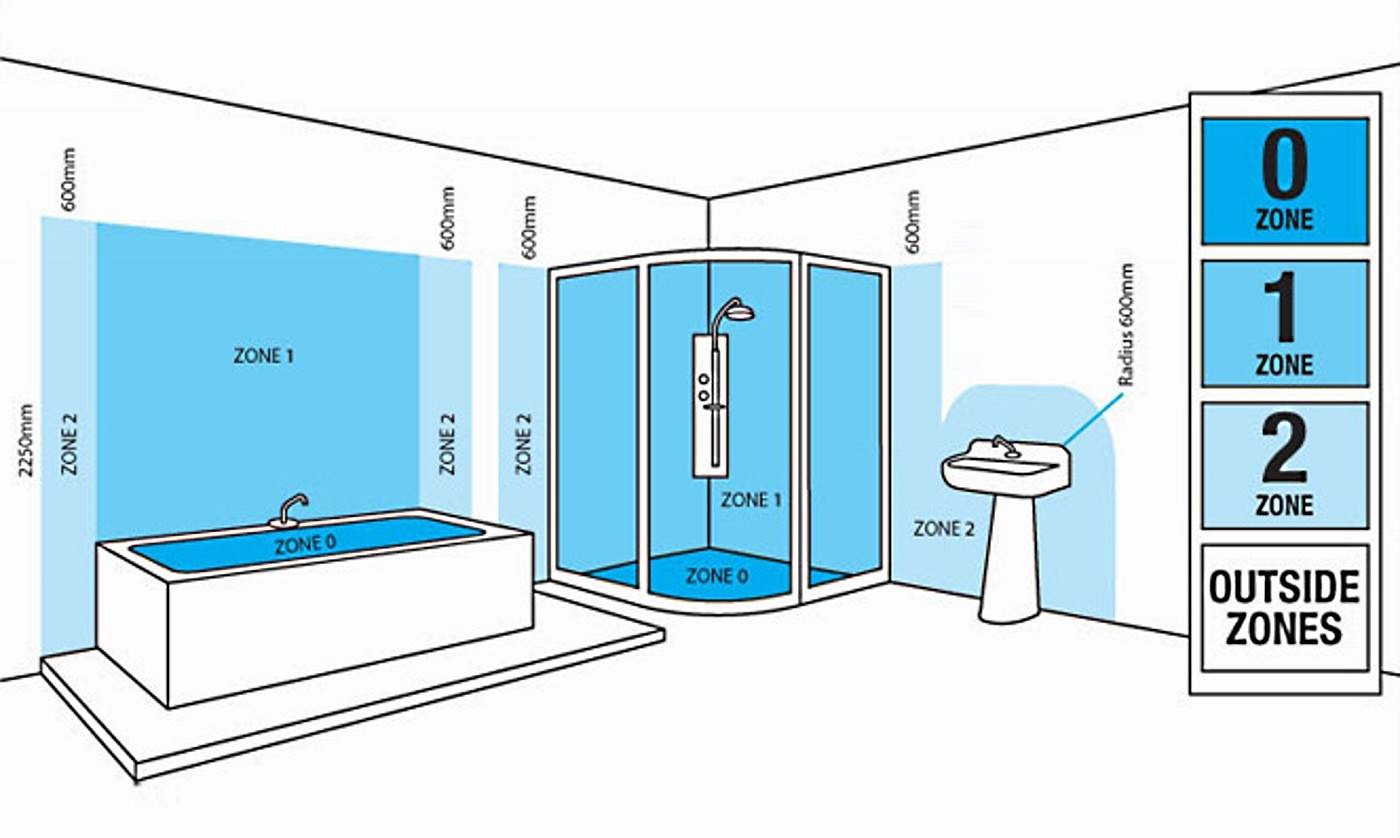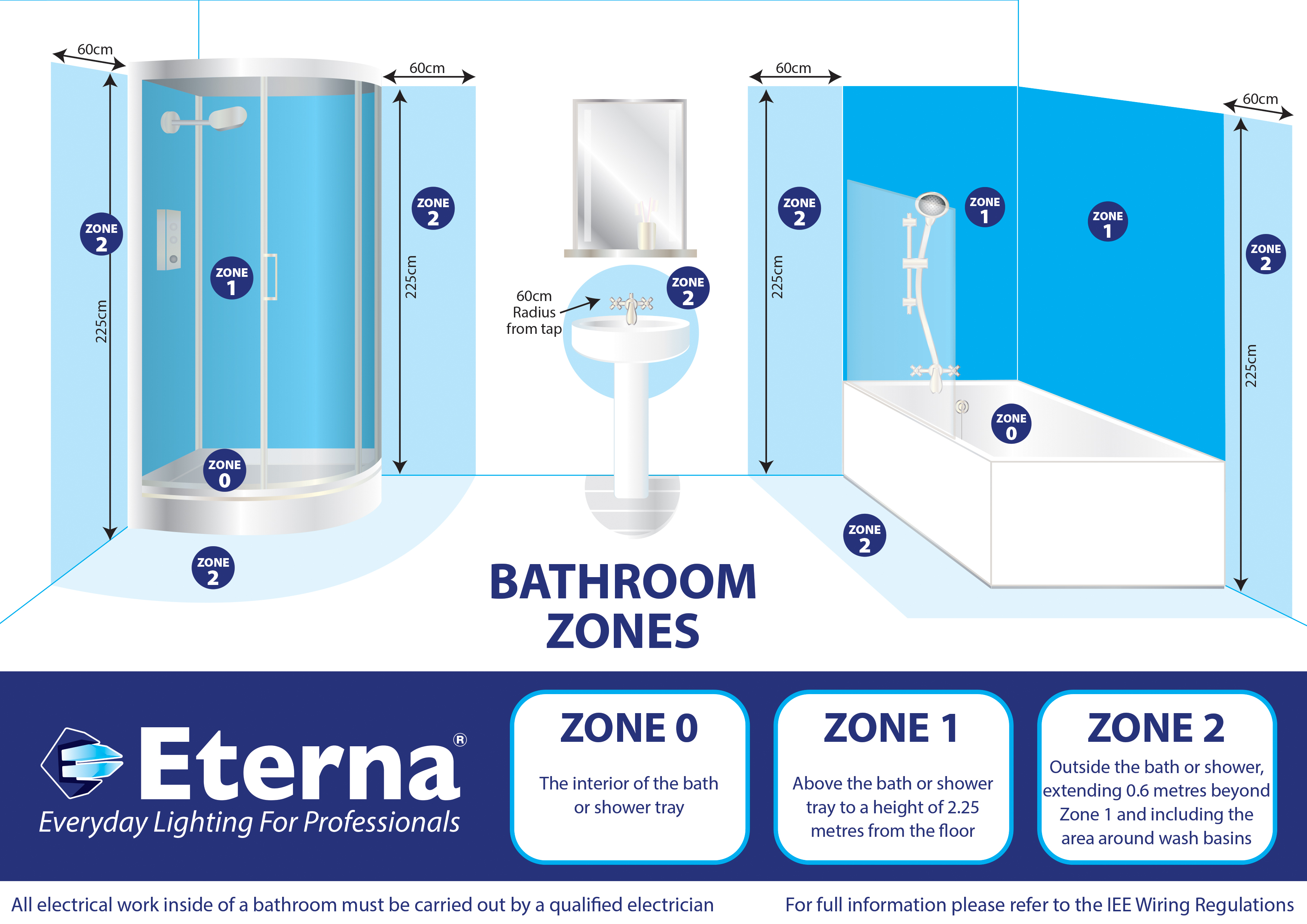Bathroom Lighting Zones and their Functions

Bathroom lighting zones 17th edition – In bathroom lighting, dividing the space into different zones allows for tailored illumination that supports specific tasks and enhances the overall functionality and ambiance of the room.
When updating your bathroom, it’s essential to consider the 17th edition of bathroom lighting zones. This updated code ensures optimal illumination and safety in your space. If you’re aiming for a stylish touch, incorporating mid century modern home decor can complement the lighting zones seamlessly.
The clean lines and geometric shapes of mid-century modern design create a cohesive and visually appealing ambiance. By blending these elements, you can achieve a bathroom that is both functional and aesthetically pleasing, adhering to the latest lighting standards.
The size and layout of the bathroom should be carefully considered when planning lighting zones. A larger bathroom may require more zones and fixtures, while a smaller bathroom can benefit from a more focused approach.
When planning your bathroom lighting, it’s important to consider the 17th edition of the lighting zones. This will ensure that you have the right amount of light in each area of your bathroom. For example, you’ll need brighter light near the mirror for tasks like shaving or applying makeup.
And you’ll want softer light in the shower or bathtub area to create a more relaxing atmosphere. You can find a wide variety of hobby lobby vases that are perfect for adding a touch of style to your bathroom. And don’t forget to consider the type of light bulbs you use.
LED bulbs are a great option because they’re energy-efficient and last longer than traditional bulbs.
Task Lighting
Task lighting provides focused illumination for specific activities such as shaving, applying makeup, or showering. It is typically placed near mirrors, vanities, and shower areas.
Ambient Lighting
Ambient lighting creates a general level of illumination throughout the bathroom. It is often provided by ceiling fixtures or wall-mounted sconces and helps to create a comfortable and inviting atmosphere.
Accent Lighting
Accent lighting highlights specific features or areas of the bathroom, such as artwork, mirrors, or decorative elements. It adds visual interest and can create a more sophisticated ambiance.
Types of Lighting Fixtures for Bathroom Zones

Selecting the appropriate lighting fixtures for each bathroom zone is crucial to ensure optimal illumination and functionality. Different types of fixtures offer unique characteristics and benefits, making them suitable for specific tasks and areas within the bathroom.
Ambient Lighting Fixtures
- Ceiling-mounted fixtures: Provide general illumination throughout the bathroom. Recessed lighting, chandeliers, and pendant lights are common options.
- Wall-mounted sconces: Offer ambient lighting while adding a decorative touch. They are ideal for illuminating mirrors or creating a soft glow in the bathroom.
Task Lighting Fixtures
- Vanity lights: Mounted above the bathroom mirror, these fixtures provide direct illumination for tasks like shaving, applying makeup, or brushing teeth.
- Recessed spotlights: Can be installed in the ceiling or walls to focus light on specific areas, such as the shower or bathtub.
Accent Lighting Fixtures, Bathroom lighting zones 17th edition
- Pendant lights: Create a focal point and add a decorative element. They are often used to highlight a specific area, such as a bathtub or vanity.
- LED strip lights: Provide indirect lighting and can be used to create unique effects, such as illuminating shelves or mirrors.
By combining different types of lighting fixtures, you can create a cohesive and functional lighting scheme that meets the specific needs of each bathroom zone.
Design Considerations for Bathroom Lighting Zones: Bathroom Lighting Zones 17th Edition

When designing lighting for bathroom zones, several factors must be considered to ensure optimal functionality, aesthetics, and energy efficiency.
One crucial factor is the impact of natural light. If the bathroom has windows, natural light can significantly reduce the need for artificial lighting during the day. The position and size of windows should be considered to maximize natural light penetration while minimizing glare.
Color Temperature and Brightness Levels
The color temperature and brightness levels of lighting fixtures should be carefully selected for each zone. Warm color temperatures (2700K-3000K) create a cozy and inviting atmosphere, while cooler color temperatures (4000K-5000K) provide a brighter and more energizing environment. The brightness level should be adjusted according to the specific task being performed in each zone.
Energy Efficiency
Incorporating energy-efficient lighting practices into bathroom design is essential for reducing energy consumption and environmental impact. LED fixtures are highly energy-efficient and have a long lifespan, making them an excellent choice for bathroom lighting. Other energy-saving measures include using dimmers to control light levels and installing motion sensors to turn lights off when the bathroom is unoccupied.
